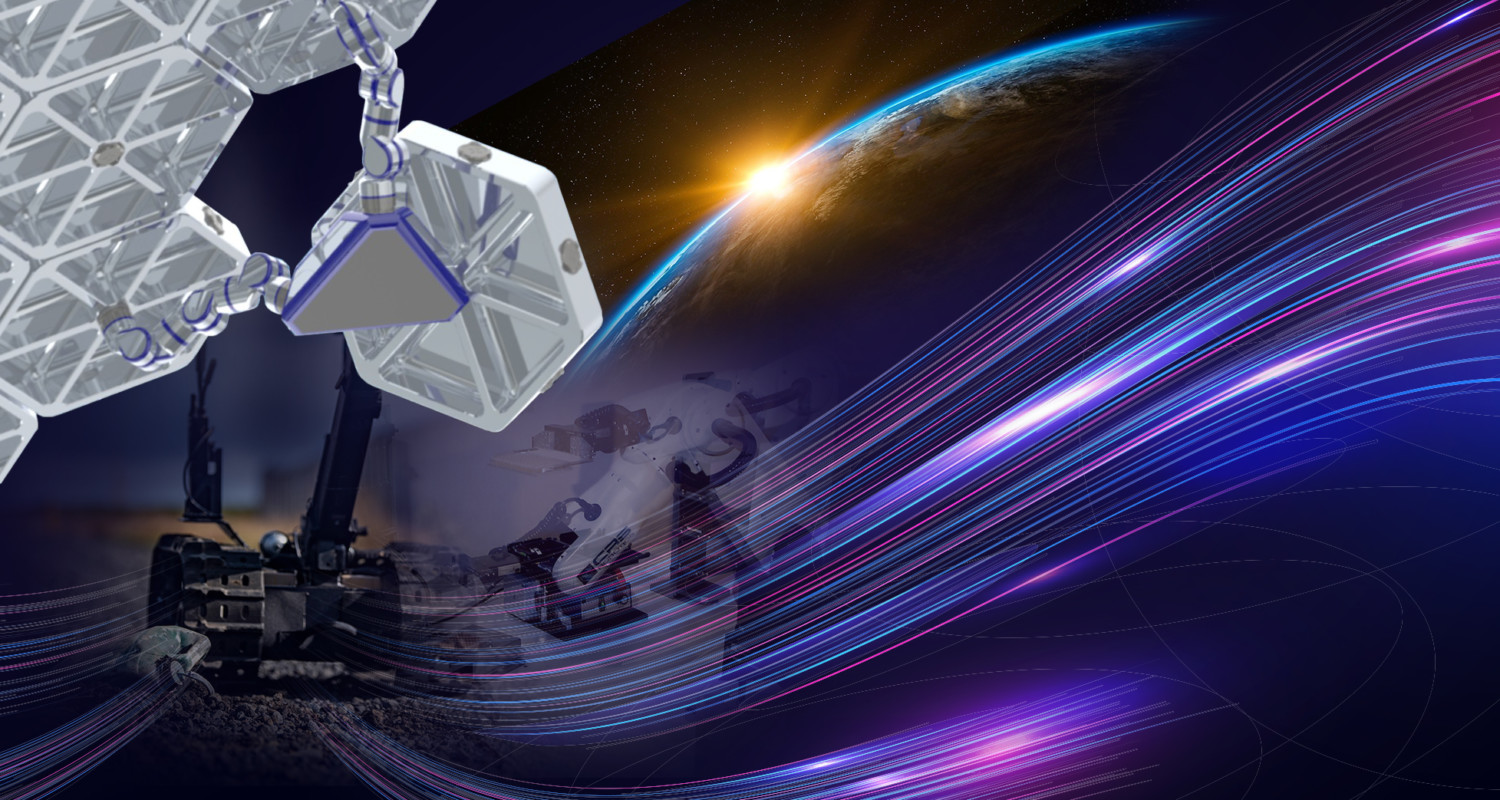From 1 – 2 June 2022, Space Applications Services will present papers at the “Advanced Space Technologies in Robotics and Automation” (ASTRA) Symposium, organised by the Automation and Robotics (A&R) section of the European Space Agency (ESA).
-
The following papers are written by Space Applications Services authors; have contributions by SpaceApps staff, or make reference to the innovative work that we are doing, as we build the near future.
Robotic Architecture and Operational Concept for In-Space Assembly and Servicing Missions
This paper provides a description of the PERIOD mission, its robotic architecture and the operations concept to demonstrate the assembly of a reflector in orbit and the reconfiguration of a small satellite. The PERIOD project is developing the needed building blocks further and preparing an in orbit demonstration hosted on the Bartolomeo platform outside of the Columbus module.Demonstrator Design of a Modular Multi-Arm Robot for On-Orbit Large Telescope Assembly
The development of building blocks, and standard interconnects in particular, enables promising perspectives for the assembly of large structures on-orbit. By coupling these standard interconnects with dexterous arms, it is now possible to imagine orbital robots assembling, in-situ, modular structures to emancipate from launcher constraints. Such a mission scenario and related concept of operations are proposed within the ESA MIRROR project. It involves a modular multi-arm installation robot to address this challenge. This paper deals with the design of a fully representative breadboard for this innovative robot in order to prove its concept and abilities.Design and Development of a Relocatable Robotic Arm for Servicing On-Orbit Modular Spacecraft
This paper deals with the design, development and testing of a new generation of robotic manipulator for on-orbit maintenance and servicing. This device tackles especially modular missions related to assembly and reconfiguration of modular satellites, coupled with the paradigm of standardisation of spacecraft featuring standard interconnects. This robotic system benefits from an innovative multidisciplinary design for performing manipulation and relocation tasks over compatible spacecraft structures.PULSAR: Testing the Technologies for In-Orbit Assembly of a Large Telescope
The EU project PULSAR (Prototype of an Ultra Large Structure Assembly Robot) carried out a feasibility analysis for a potential mission that could demonstrate robotic technology for autonomous assembly of a large space telescope. The project performed the analysis using two hardware demonstrators, one devoted to show the assembly of five segmented mirror tiles using a robotic manipulator, and another one showing extended mobility for assembling a large structure in low gravity conditions.Enabling Astronaut Self-Scheduling using a Robust Modelling and Scheduling System (RAMS): A Mars Analog Use Case
Human long duration exploration missions (LDEMs) raise a number of technological challenges. This paper addresses the question of the crew autonomy: as the distances increase, the communication delays and constraints tend to prevent the astronauts from being monitored and supported by a real time ground control. Eventually, future planetary missions will necessarily require a form of astronaut self-scheduling. We study the usage of a computer decision-support tool by a crew of analog astronauts, during a Mars simulation mission conducted at the Mars Desert Research Station (MDRS, Mars Society) in Utah.Cooperative Mapping for Lunar Exploration by a Team of Heterogeneous Robots
Cooperation between robots is emerging as a promising technique to improve performances, but it still remains unused for robots in space exploration missions. This paper presents a modular approach in which Cooperative Localisation and Mapping based on Graph Optimisation and inter-robot loop closure detections for heterogeneous lunar robots is proposed. The approach relies on a smoothing technique, based on graph optimisation and a module to perform features-based matching between sub-maps of different robots. This solution is developed within the scope of Cooperative Robots for Extreme Environments (CoRob-X) which is an EC-funded project with the objective of demonstrating how a multi-agent robotic team can explore a lunar lava tube.Corob-X: A Cooperative Robot Team for the exploration of Lunar Skylights
The project CoRob-X develops and demonstrates enabling technologies for multi-agent robotic teams to explore planetary surfaces with a focus on hard-to-reach areas where a collaborative scheme is required to efficiently explore complex environments. Exploring lava tubes is such a challenging environment and requires a team of robots able to collaborate in an autonomous way to find their way to the subsurface tube system, descend through a natural entry hole (the so-called skylight), and explore the interior with payload instruments to provide scientific data. The developed robotic exploration system that will tackle the ambitious goal is composed of three rovers with substantially different technical characteristics. The paper presents the overall approach, i.e., the control architecture, the robotic systems, and the software to be used.NEX4EX: Novel Exercise Hardware for Exploration
This paper presents the NEX4EX project “Novel Exercise Hardware for Exploration”, which aims to design, build and validate a full-body countermeasure platform that enables high intensive resistive and plyometric exercise as well as postural control training, and strength training. The NEX4EX exerciser herewith addresses neuromuscular and musculoskeletal deconditioning. The intended use is to improve crew health and fitness maintenance for long-duration space missions beyond ISS lifetime. This will require the system to be multipurpose/versatile in terms of exercises added to a smaller footprint than systems currently used on ISS. NEX4EX is a novel concept for a novel utilisation paradigm given future space exploration-class missions.Are you interested in our work? Reach out to us on info@spaceapplications.com.
News/SpaceApps/Communications & Media/RC
